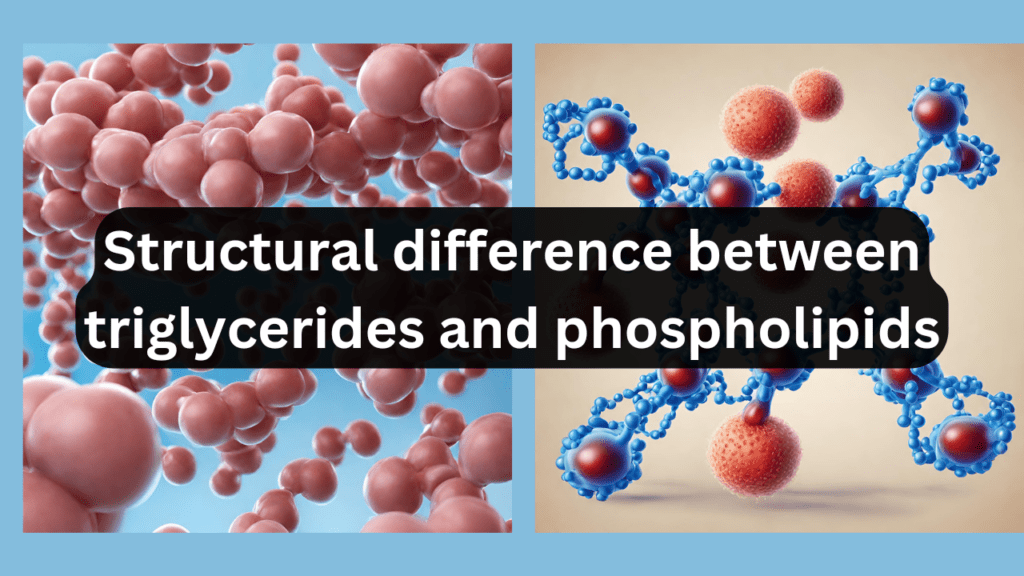
- Molecular Composition
- Triglycerides consist of three fatty acid chains attached to a glycerol molecule.
- Phospholipids have two fatty acid chains and a phosphate group attached to glycerol.
- Hydrophilic and Hydrophobic Regions
- Triglycerides are hydrophobic, with all three fatty acid chains being hydrophobic.
- Phospholipids have a hydrophobic tail (fatty acids) and a hydrophilic head (phosphate group), making them amphipathic.
- Biological Function
- Triglycerides are primarily used for energy storage in adipose tissue.
- Phospholipids are essential components of cell membranes and play a role in maintaining membrane structure and function.
- Solubility
- Triglycerides are insoluble in water.
- Phospholipids are amphipathic, making them suitable for forming lipid bilayers in aqueous environments, such as cell membranes.
- Biological Role
- Triglycerides are a major source of stored energy in the body.
- Phospholipids are key structural components of cell membranes and are involved in cell signaling and membrane transport.
- Number of Fatty Acid Chains
- Triglycerides consist of three fatty acid chains, making them exclusively composed of hydrophobic components.
- Phospholipids have two fatty acid chains, which contribute to their amphipathic nature, along with a phosphate group.
- Energy Storage vs. Membrane Structure
- Triglycerides are primarily involved in long-term energy storage, especially in adipose tissue.
- Phospholipids are essential for the structural integrity of cell membranes and play a key role in controlling what enters and exits the cell.
- Chemical Function
- Triglycerides are mainly involved in energy metabolism, releasing energy through the breakdown of fatty acids.
- Phospholipids are essential for maintaining the integrity and fluidity of cell membranes and participate in various cellular processes, including signal transduction and membrane transport.
- Presence of a Phosphate Group
- Triglycerides do not contain a phosphate group in their structure.
- Phospholipids have a phosphate group in their head region, which is responsible for the hydrophilic properties of the molecule.
- Role in Lipid Bilayers
- Triglycerides do not participate in the formation of lipid bilayers.
- Phospholipids are crucial in forming lipid bilayers, which create the basic structure of cell membranes and organelle membranes.